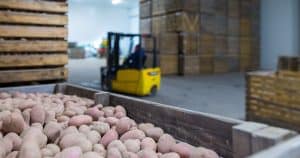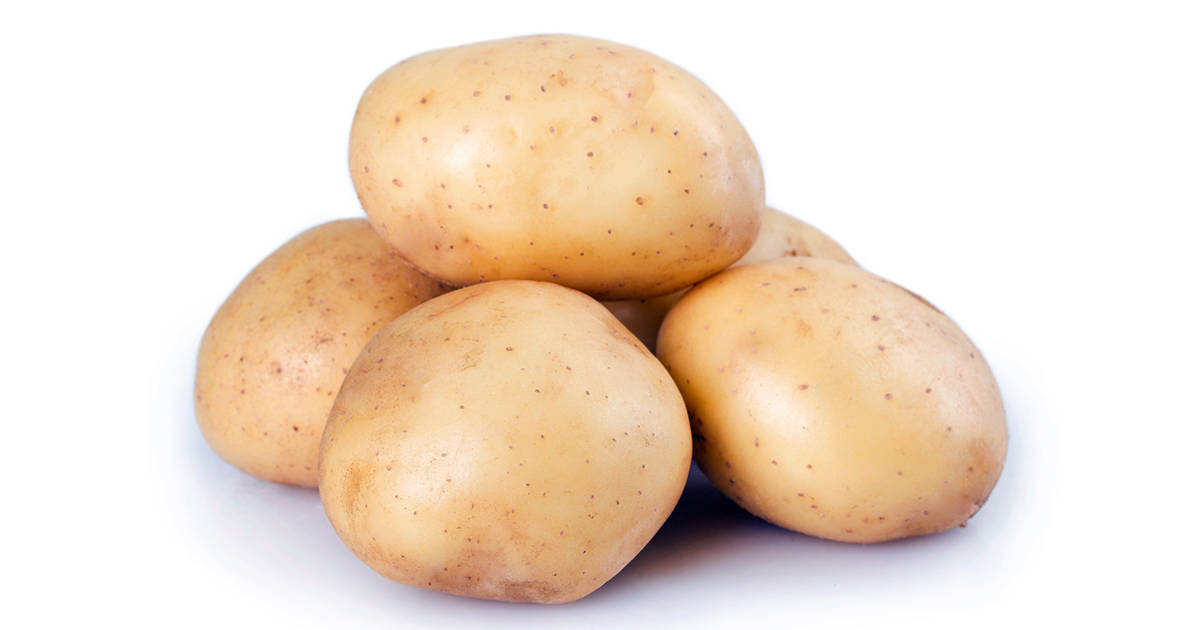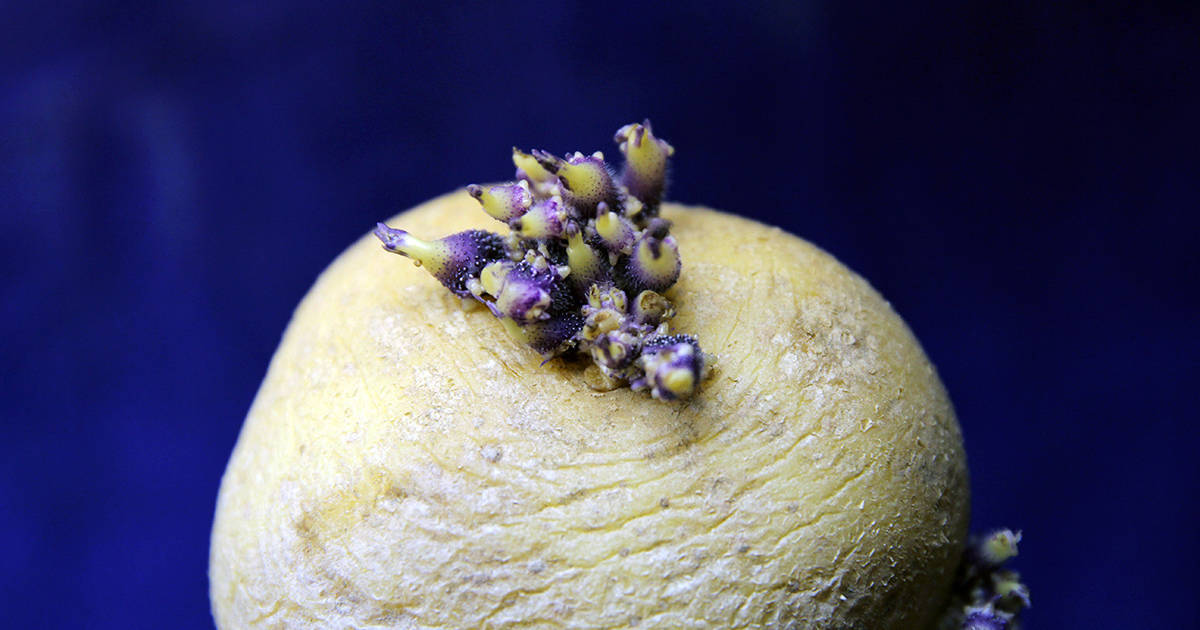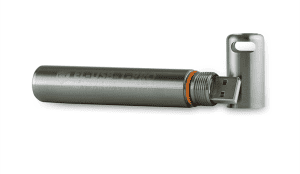
World over, continuous use of CIPC (as a sprout suppressant on potatoes) for a period of more than 50 years and that too at commercial scale has brought in some pertinent issues which are related directly to the safety of human, animal, water and environment
(Paul, Ezekiel and Pandey, 2015).
In light of the recent termination of Chlorpropham as a sprout suppressant, research into alternative sprout suppression solutions is being performed. Further investigation has been carried out into finding ways of sustaining potatoes while they are kept in storage. This study explores Chlorpropham, its uses, as well as exploring alternative sprout suppressants. This research has identified Ethylene as an ideal solution. However, for Ethylene to be most effective, stores must consistently remain at 3.5°C (Briddon, 2006), requiring regular temperature checks. This study puts forward a temperature monitoring solution using Lascar Electronics’ EL-USB-1-PRO data logger.

CIPC – Potato Sprouting Suppressant
Chlorpropham (CIPC) is isopropyl-N-(3-chlorophenyl) carbamate, is widely used as a sprout suppressing agrochemical applied to stored potatoes. It works by interfering with cell division to inhibit sprout development
(Cipccompliant.co.uk, 2020).
CIPC maintains high-quality potato tubers for up to a year and is deemed as being a critical necessity within the current market place (Cipccompliant.co.uk, 2020). It is the most commonly used sprout suppressant for potatoes and has been for more than 50 years. However, new research has established several safety concerns due to the long-term continuous use of CIPC. Thus, the EU has published new regulations which enforce a withdrawal of CIPC based products.

Harvest
“Effective control of sprouting is a fundamental requirement of potato storage. In the packing sector, in particular, demands are such that treatments must ensure a virtual absence of sprouts”
(Briddon, 2006).
To ensure potatoes are available all year round, CIPC is applied to approximately 1.2 million tonnes of potatoes every year by dedicated fogging contractors. “During storage at temperatures of 8 to 12°C, potatoes are treated with a sprout suppressant either once (if stored up to 5 months) or twice (if stored for 6 to 9 months)” (Paul, Ezekiel and Pandey, 2015).
Several studies carried out during the 50 years since its first use has enabled a clearer understanding of CIPC, its mode of action, its metabolism in plants and animals and its fate in our environment (Paul, Ezekiel and Pandey, 2015).
Vijay, Ezekiel and Pandey (2018) have carried out extensive research into CIPC. In their article “Use of CIPC as a potato sprout suppressant: health and environmental concerns and future options” they outline various dangers attributed to this chemical. Their main argument explores the effect that it has on humans, animals and the environment.
The Threats Posed by CIPC
A by-product of CIPC is 3-chloroaniline (3-CA), which is said to be more toxic to humans and the environment than CIPC. Added to this is the fact that it has the potential to cause cancer in humans, as well as being a toxic water pollutant and harmful to aquatic life. CIPC is also very toxic to worms and birds, another reason why the European Commission decided to withdraw it from use.
With these changes in mind, alternative solutions are now vitally necessary for the industry.
Ethylene – Alternative sprout suppressants
Control of sprouting is a fundamental requirement in potato storage, meaning that there must be a virtual absence of sprouts on potatoes. Ethylene has been used in the UK as a sprout suppressant since 2001 in the pre-packing potato sector where storage temperatures are consistently kept at 3.5°C.
The effectiveness of Ethylene as a sprout suppressant is reliant on low temperature in storage. In warmer temperatures, sprouts are visible much quicker, and therefore, constant temperature readings are required to make sure the temperature remains within the threshold (Briddon, 2006). Colgan et al (2012) found that different types of potatoes require different temperatures, yet most need to be kept at low temperatures below 10°C. “An important constraint to Ethylene use for sprout suppression is that varietal variability in Ethylene sensitivity means that most varieties need to be held at low temperature for effective sprout control” (Colgan et al., 2012).
Lascar’s USB temperature data loggers provide you with the necessary information to make educated and informed decisions concerning solving issues, improving processes and increasing efficiency.
EL-USB-1-PRO Data Logger

Thanks to Lascar’s EL-USB-1-PRO you no longer need to manually take temperature readings. The EL-USB-1-PRO is highly accurate, reliable and flexible, and designed specifically for ease of use. As an industrial temperature data logger it has a rugged steel case, protected against corrosion, impact and water ingress to IP67/NEMA 4X, perfect for harsh environments. The EL-USB-1-PRO monitors and records temperatures with the capability to log for more than 1 year, and can be set up in minutes using Lascar’s free EasyLog software. This software allows you to set your own thresholds for high and low alarms, to warn you of any temperature breaches, and you can also instruct your logger for immediate or delayed starts. To access your data simply plug the data logger into your PC and you can view, graph, and export all your data from the software interface.
Key Features Include:
| Measurement Range | -40 to +125°C |
| Accuracy | ±0.2°C/ ±0.4°F |
| Readings | Logs for more than one year |
| Logging Rate | User selectable between 1 second and 12 hours |
| Battery Life | More than one year |
Conclusion
Due to the withdrawal of CIPC, research into alternative forms of sprout suppressant was vital. This study has found that Ethylene is an optimal solution. Effective sprout control in storage using Ethylene is most effective at a temperature of 3.5°C (Briddon, 2006). Because the temperature is so specific, readings must be regularly and accurately logged to avoid spoiling of the stored produce. The EL-USB-1-PRO helps maintain consistent storage temperatures, preventing potentially costly losses.
References:
Briddon, A. (2006). The use of ethylene for sprout control. [ebook] Oxford: British Potato Council, pp.4-20.
Available at: https://potatoes.ahdb.org.uk/sites/default/files/publication_upload/R279%20Research%20Review%20 Ethylene.pdf [Accessed 20 Jan. 2020].
Cipccompliant.co.uk. (2020). Potato Industry CIPC Stewardship. [online]
Available at: http://www.cipccompliant.co.uk/about_cipc/ [Accessed 3 Feb. 2020].
Colgan, R., Harper, G., Taylor, M., Bryan, G. and Rees, D. (2012). Reducing energy usage and wastage by improving ethylene control of potato sprouting. [online] Warwickshire: Potato Council, pp.1-20.
Available at: https://projectblue.blob.core.windows.net/media/Default/Sector%20pages/Potaotes/R426%20Final%20 Report.pdf [Accessed 18 Feb. 2020].
Farmers Guardian. (2018). Ten top tips for potato storage. [online]
Available at: https://www.fginsight.com/news/news/ten-top-tips-for-potato-storage-68854 [Accessed 21 Jan. 2020].
Paul, V., Ezekiel, R. and Pandey, R. (2015). Sprout suppression on potato: need to look beyond CIPC for more effective and safer alternatives. Journal of Food Science and Technology, 53(1), pp.1-18. Potatoes.ahdb.org.uk. (2020). Quick Guide: Alternative Sprout Suppressants | AHDB Potatoes. [online]
Available at: https://potatoes.ahdb.org.uk/publications/quick-guide-alternative-sprout-suppressants [Accessed 3 Feb. 2020].
Vijay, P., Ezekiel, R. and Pandey, R. (2018). Use of CIPC as a potato sprout suppressant: health and environmental concerns and future options. Quality Assurance and Safety of Crops & Foods, 10(1), pp.17-24.



